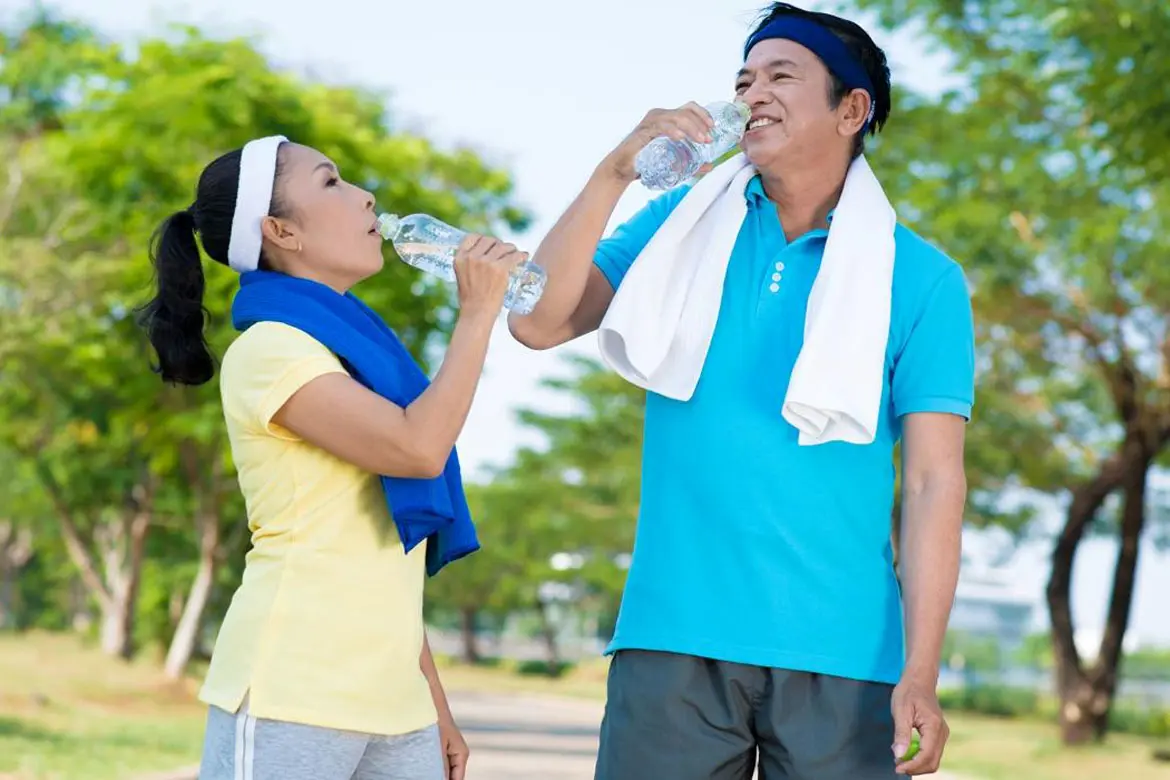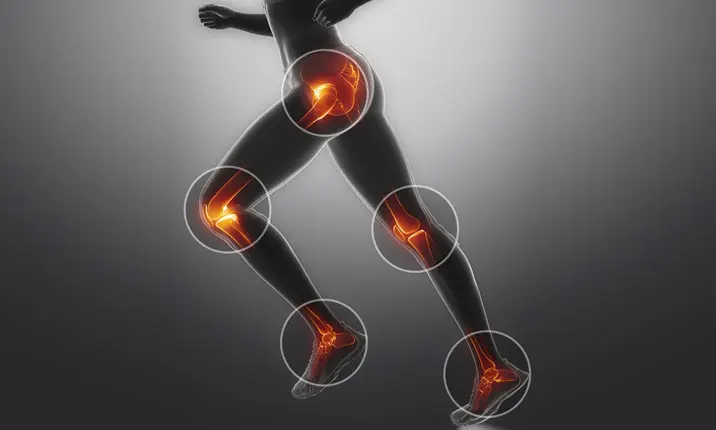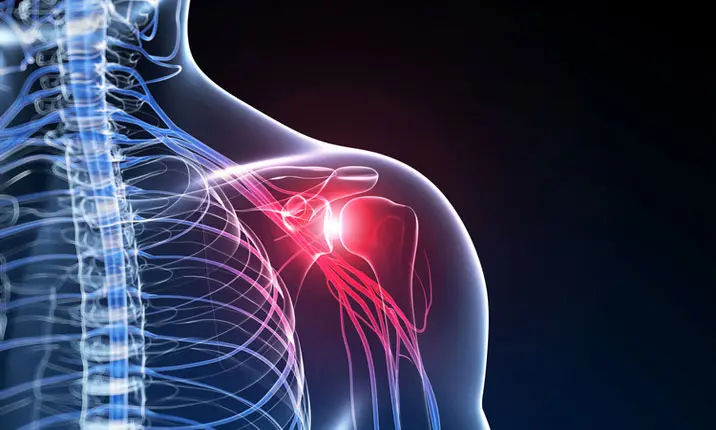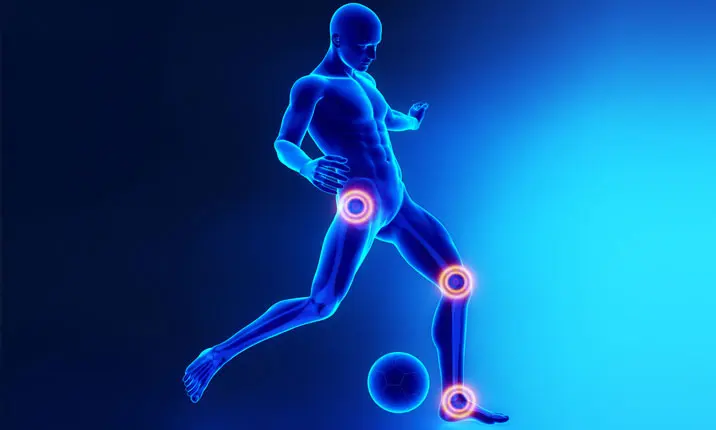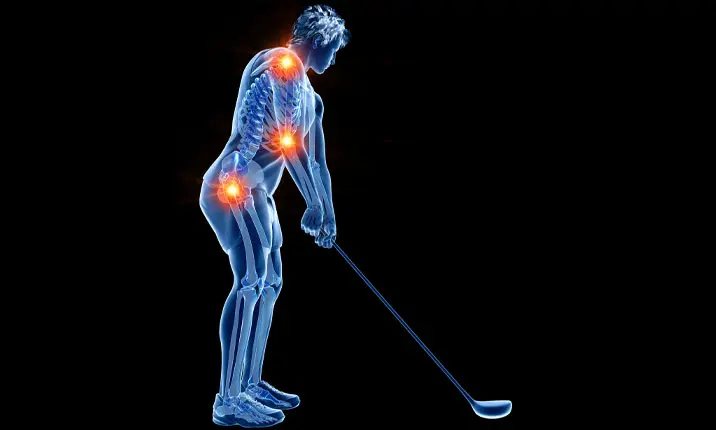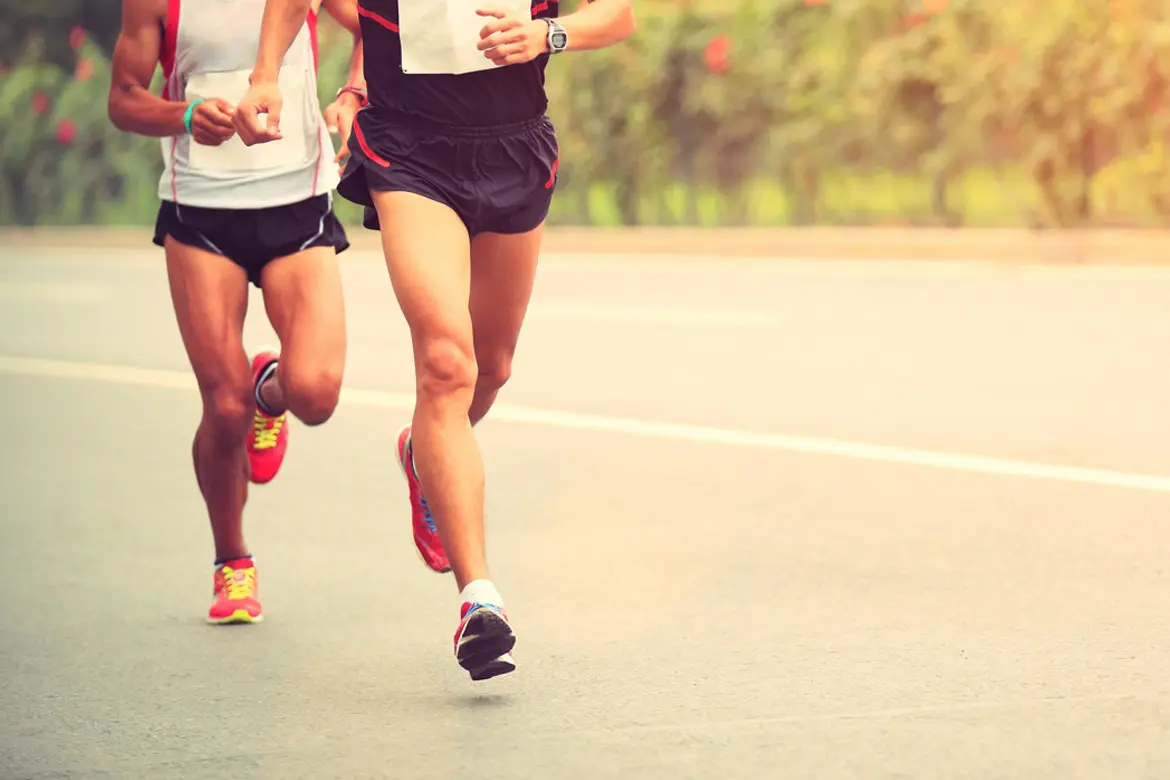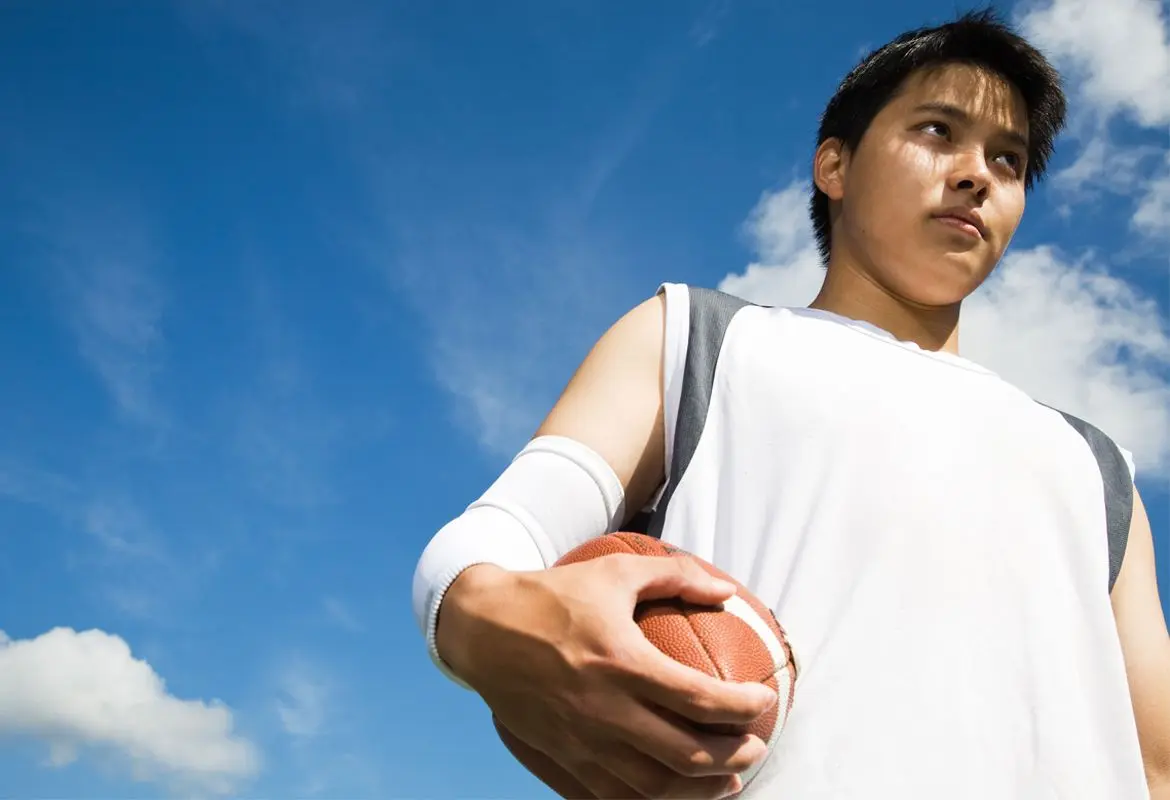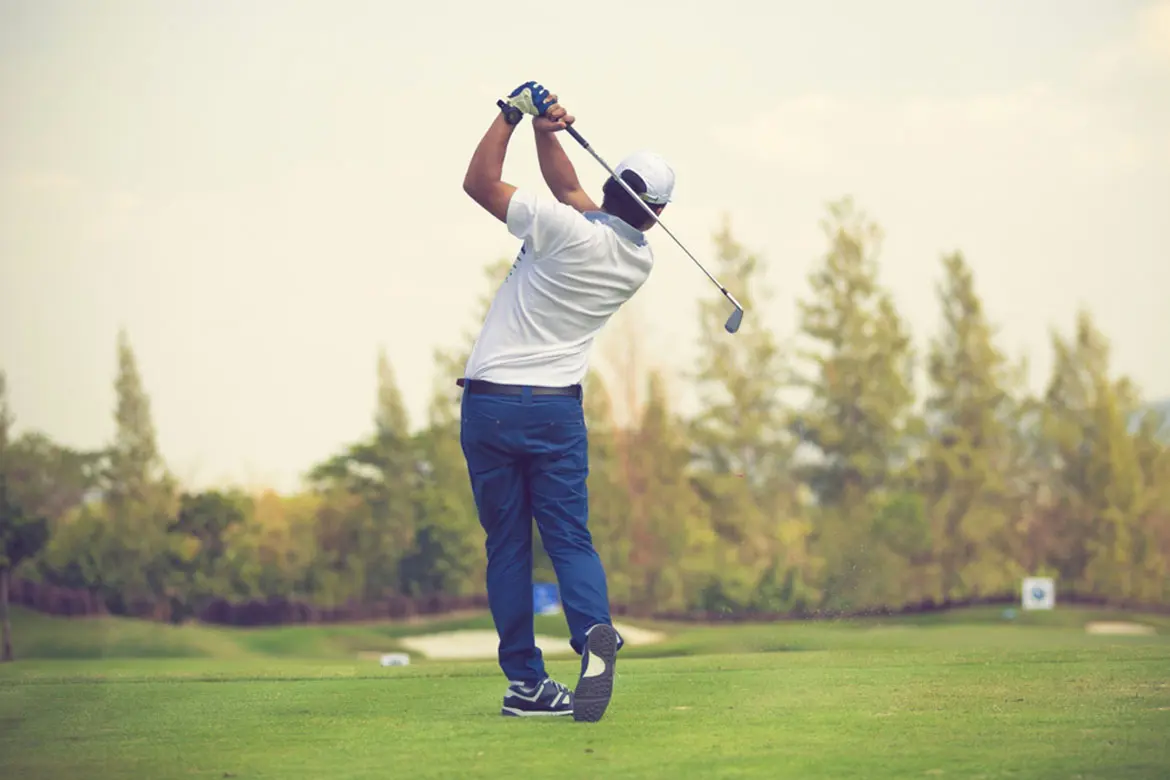With age come lost muscle strength and mass, as well as declining performances of the heart and lungs. This affects stamina and endurance.
"As we grow older, our bodies undergo certain physical changes which may affect our athletic ability," says Dr Toh Choon Lai, an orthopaedic surgeon at Mount Elizabeth Hospitals, Singapore.
Why you injure yourself more in your 40s
Our muscles, bones and joints tend to change composition as we approach middle age. This is because certain processes that help the body rebuild and strengthen begin slowing down, making injury more likely. These include:
Loss of bone mass
After the age of 40, we begin to lose bone faster than we can rebuild it. This leads to a lower bone density, where are bones are more fragile and prone to fractures.
Loss of muscle mass
Muscle mass begins to decline, beginning in our late 30s. This occurs more intensely as we grow older and especially in people who are sedentary.
Drier cartilage and tendon
The cartilage that cushions our bones and joints starts to hold less water as we grow older. Cartilage that is dry is more likely to wear and tear as we move. Tendons also become drier and stiffer, making them more likely to tear or rupture when overstretched.
Less elastic ligaments
Ligaments become less flexible as we age. Therefore, when used beyond a certain point, these ageing ligaments are more likely to sustain damage.
Lifestyle factors
Some people may experience ageing of their bones, muscles and joints at an earlier age than others. These may be due to lifestyle factors, including diet, body weight and activity level.
Are you in your 40s and would like to start playing more sports in order to maximise the health benefits exercise brings? With increased age comes a greater risk of injuries, especially for those without a regular workout regime. We dive into 4 common sports and their impact on our bodies after 40.
Running
Common injuries are often caused by excessive running. Such injuries can include back pain, calf strain, shin splints, knee injuries, and hip bursitis.
Back pain
Running is usually not the direct cause of back pain. In fact, research shows that athletes actually experience less back pain than the average person.
However, running can worsen symptoms of back pain due to other conditions, such as hyperlordosis (a type of poor posture), strains and sprains of lower back muscles or a slipped disc. These symptoms include:
- Aching muscles
- Stabbing pain
- Pain when bending your back
- Pain when lifting
If you experience any of these pains after running, be sure to bring it up with your doctor that the underlying cause can be identified and treated. In short, though you may experience normal levels of soreness after running, you should not have pain in your back that limit your movements.
Calf strain
The calf muscles have an important role in running. They propel us forward, push off the ground and help stabilise the knee and ankle.
Calf strains can occur due to several reasons:
- Overloading of the calf muscles by running too long or on uphill terrain
- Weak calf muscles and poor flexibility
- Chronic exertional compartment syndrome, a potentially serious condition where there is swelling of the lower leg muscles
- Sciatica or damage of the sciatic nerve
Depending on the underlying cause and severity of your calf pain, managing it may involve requiring medical treatment, physiotherapy and rehabilitation, or simply resting and gradually increasing your running duration and intensity.
Shin splints
Shin splints refers to pain in the front or the inner parts of your lower legs, along your shinbone. They can happen when you increase your running volume too quickly, especially when running on hard surfaces.
Symptoms include:
- A dull pain along the front or inner part of your shinbone
- Pain that gets worse when you exercise
- Tenderness to the touch
- Mild swelling
Shin splints are usually not serious and often get better with rest. You can also opt to cut back on how frequently or how far you run.
Knee injuries
Knee injuries, also known as runner's knee, refers to pain in the front of your knee or around your kneecap. People who have weakness in their hips or the muscles around the knee are at higher risk of developing runner's knee.
Pain due to runner's knee is characterised by:
- The dull type, felt in one or both knees
- A range from mild to very painful
- Worsening with prolonged sitting or exercise
- Worsening when jumping, climbing stairs or squatting
Hip bursitis
Hip bursitis is where the bursa, a small tissue at your hip, is inflamed, causing pain and tenderness in the area. This hip pain can become worse with prolonged walking or stairs climbing. In serious cases, surgical removal of the bursa is required.
"Runners should use shoes with good cushioning and should change shoes every 500 – 700km," recommends Dr Toh, who adds that elderly runners are also more susceptible to fall-related injuries.
Swimming
Swimming is often considered a gentler sport, but it is not injury-free. Shoulder injuries such as rotator cuff tendonitis or rotator cuff tear can occur, especially when there is insufficient warm-up before a swim, or when there is poor swimming posture.
Rotator cuff tendonitis
The rotator cuff is a network of muscles and tendons that allow the arm to rotate. Rotator cuff tendonitis is where the rotator cuff tendon is inflamed, causing pain in the shoulder which worsens when the arm is raised overhead.
Rotator cuff injury
Rotator cuff tears usually occur slowly over time in swimmers. This happens when rotator cuff tendonitis is not treated, and with repeated overuse, leads to an eventual tear. Usually, swimmers experience partial instead of complete rotator cuff tears.
Rotator cuff injury can be treated through physiotherapy and medication, but in serious cases, a keyhole (which means smaller cuts) procedure can be performed to reattach the torn tendon to the bone.
Soccer
Some of the common soccer injuries include ankle sprains, knee ligament injuries, and hamstring strains.
Ankle sprains
Ankle sprains occur when there is stretching and tearing of ligaments surrounding the ankle joint. They tend to happen when players miss a step or a landing from a jump or fall.
Knee ligament injuries
Knee injuries are among the most common injuries in soccer as the sport requires players to stop and shift directions quickly, placing extreme rotational stress on the knees and ligaments that support them.
Hamstring strains
Hamstring injuries, involving the 3 back muscles of the thigh, can range from a minor strain to a total rupture. They often happen when the hamstring muscles are lengthened and contracted at the same time, for example, when sprinting across the field.
Osteoarthritis
Among older soccer players, degeneration of knee and ankle may also be a problem, which can result in osteoarthritis in the knee and the ankle. Serious knee arthritis might require a surgical procedure to replace the diseased knee joint with an artificial joint.
One of the problems for contact sports (eg. soccer) athletes is to be too accustomed to injuries and therefore self-prescribe their own remedies. However, it is important to consult a specialist for a thorough diagnosis to ensure that there are no long-term injuries sustained from repeated strains during high-impact sports.
Golf
Golf is becoming increasingly popular. Common overuse injuries in golfers include shoulder problems, neck pain, lower back pain, tennis elbow and golfer's elbow. Wrist pain is also common in older golfers, because of the rapid twisting of the wrist during the golf swing.
Shoulder problems
Pain in the shoulder among golfers can be caused by rotator cuff injuries that can be sustained from a poorly executed golf swing, hitting a root or rock, taking a deep pivot and from overuse. The injuries range from inflammation of the tendons to tears.
Neck pain
Neck injuries are common among new golfers who are not used to twisting their bodies so much. Swinging the club and hitting balls for a few hours may cause the neck muscles to shorten in spasm and freeze the neck into a painful position.
Lower back pain
Lower back pain among golfers occurs due to several reasons. The rotational stresses of the swing can place considerable pressure on the spine and muscles. Additionally, golfers spend 4 – 5 hours in a bent-over stance, repeating the same motion many times causing minor strains in the back that can easily lead to severe injuries.
Tennis elbow
A tennis elbow refers to irritation and inflammation of the outer tendon tissue of the elbow. The risk of acquiring this injury increases with age and is aggravated by improper swing motions.
Golfer's elbow
Golfer's elbow is similar to a tennis elbow except that the tendinitis affects the inner tendon of the elbow. This injury is also more common among those who are older and who routinely perform repetitive movements, such as hitting golf balls.
Ageing and recovery
Studies have shown that at age 45, the overall recovery rate is about 15% slower than a 30 year old person with similar injuries. This recovery rate declines further with age. While good nutrition and a balanced diet is beneficial, it is important that you moderate your physical activity, and build up to your desired optimum workout intensity instead of overexerting yourself. In addition, your body repairs less rapidly as you age, and you may be more susceptible to sports-related injuries and problem. It is important to consult a specialist if you suspect that you have a sports-afflicted injury or if you would like to get a check-up on your bone health. An orthopaedic specialist and physiotherapist can also help to tailor a fitness programme that is suitable for your physical condition and will reduce the risk of injury.
